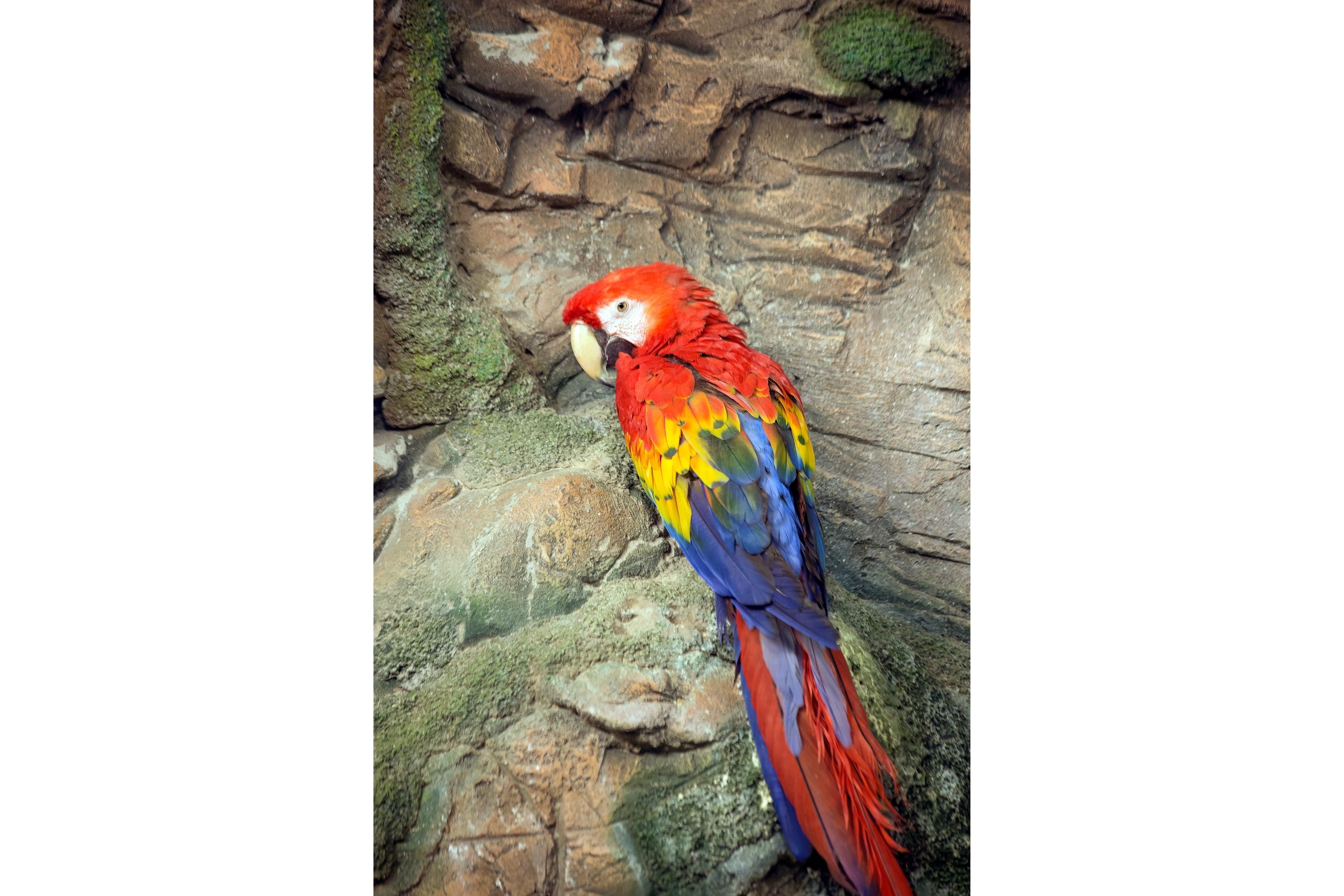Scarlet macaw
(Ara macao)

Description
The scarlet macaw (Ara macao) is a large red, yellow, and blue Central and South American parrot, a member of a large group of Neotropical parrots called macaws. It is native to humid evergreen forests of the Neotropics. Its range extends from south-eastern Mexico to Peru, Ecuador, Colombia, Bolivia, Venezuela and Brazil in lowlands of 500 m (1,600 ft) (at least formerly) up to 1,000 m (3,300 ft), the Caribbean island of Trinidad, as well as the Pacific island of Coiba.Formerly, it ranged north to southern Tamaulipas. In some areas, it has suffered local extinction because of habitat destruction, or capture for the parrot trade, but in other areas, it remains fairly common. It is the national bird of Honduras. Like its relative the blue-and-yellow macaw, scarlet macaws are popular birds in aviculture as a result of their striking plumage. There is bare white skin around the eye and from there to the bill. Tiny white feathers are contained on the face patch. The upper mandible is mostly pale horn in color and the lower is black. Juveniles have dark eyes; adults have light yellow eyes. It is frequently confused with the slightly larger green-winged macaw, which has more distinct red lines in the face and no yellow in the wing. Scarlet macaws make very loud, high and sometimes low-pitched, throaty squawks, squeaks and screams designed to carry many kilometers to call for their groups. In Central America, the range extends from extreme eastern and southern Mexico and Panama through Guatemala and Belize, the island of Coiba and infrequently on the mainland of Panama, and in Costa Rica in isolated regions on the Pacific Coast; the Nicoya Peninsula the Carara National Park and Peninsula de Osa. The scarlet macaw has escaped or been deliberately released in to Florida, but there is no evidence that the population is breeding and may only persist due to continuing releases or escapes. Scarlet macaws inhabit humid lowland subtropical rain forests, open woodlands, river edges, and savannas.The scarlet macaw can live up to 75 or even 90 years in captivity, although a more typical lifespan is 40 to 50 years. The South American range is extensive and covers the Amazon forest, extending to Peru east of the Andes, to Bolivia.In Bolivia, it is very present in the Aquicuana Reserve, located in the Beni Department, near the city of Riberalta, the Capital of the Bolivian Amazon.
Taxonomic tree:







